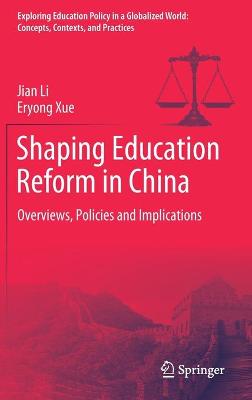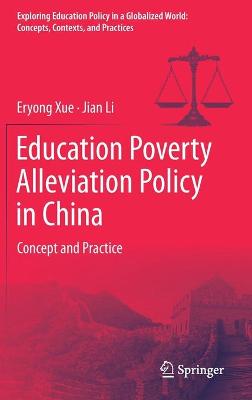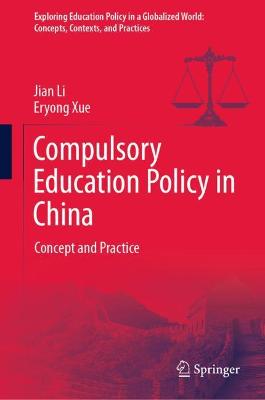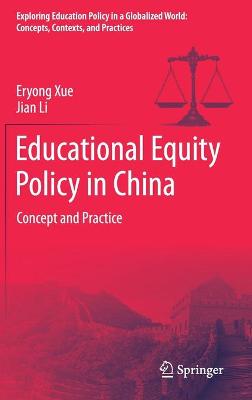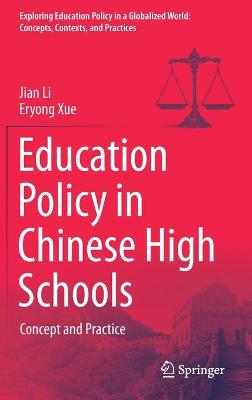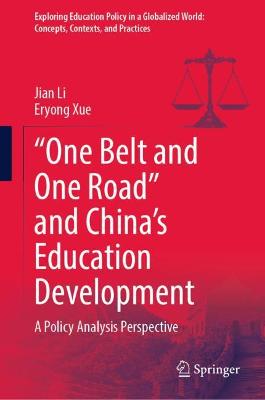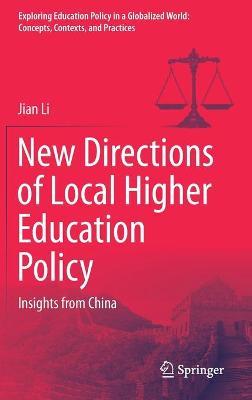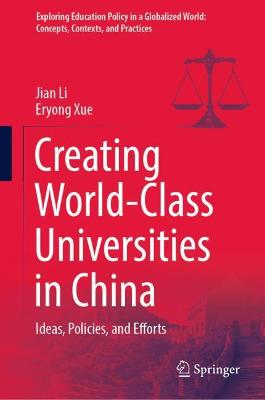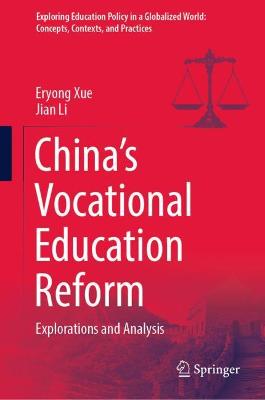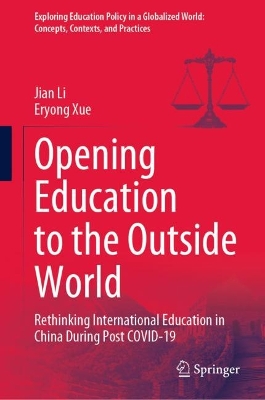Exploring Education Policy in a Globalized World: Concepts, Contexts, and Practices
16 total works
This book examines the ways education reform has been shaped in China. Focusing on the past education policy development, it offers unique perspectives to illustrate China's education reform and provides an overview of policies and their implications. In addition, the book discusses educational development, educational value, educational efforts and educational tasks and explores physical, aesthetic and labor education, as well as the management of off-campus training institutions and the policies on abolishing the "Five Only" in contemporary China. Conceptualizing the education reform model in China since 1949 for the first time, the book maps Chinese education policy development.
This book explores the ideas and background of teacher education policy development in China and implications for the contemporary Chinese education system. In addition, it examines the key themes of teacher education policies since 1949, including investigating Teacher Exchange and Rotation Policy, Teacher Policy in the Perspective of China's Alleviation of Education Poverty, Balanced Allocation Policy of Teachers in Chinese Urban and Rural areas, and the implementation effect evaluation of the free/public normal university student policy in China. All these policies contribute to explore the dramatic development of teacher education policy development in contemporary China.
"One Belt and One Road" and China's Education Development
by Jian Li and Eryong Xue
This book investigates the endogenous forces in the relation of "One Belt and One Road" and educational development in China. The conceptual framework of analyzing the relations offers an in-depth understanding of the vocational education, higher education system, and basic education system, locally, nationally, and internationally. The current situations, problems, and strategies of addressing the relation of "One Belt and One Road" and educational development in China have been explored in this book.
“Four Branches” of Internationalization of Higher Education in China
by Jian Li
This book examines the emerging power of “Four Branches” of internationalization of higher education in China from a policy retrospective analysis. In particular, branch one includes China's policy on studying abroad after the reform and opening up; branch two concentrates on China's policy on studying in China after the reform and opening up; branch three explores the policy of Sino-foreign cooperation in running schools; branch four examines the policy of foreign exchange and cooperation. All these four emerging branches are interdependent, and all contribute to shaping the landscape of internationalization of higher education system in contemporary China. In addition, the conclusion and remarks are also offered in this book.
The most important features of this book are: (1) new academic conceptualization; (2) comprehensive investigation of the new idea of “Four Branches” of internationalization of higher education in China from a policy retrospective analysis; (3) critically review and epitomize the contextualized construction of “Four Branches” of internationalization of higher education in China for constructing modern education model or system from conceptual, practical, and strategically scopes.The intended readers are scholars and researchers who are interested and work in research on China internationalization development in China and the administrators and stakeholders in Chinese education system and graduate students who majoring and minoring in the field of international education.
This book explores the holistic development of vocational education in Chinese education system. It investigates the vocational education policy development, student development, allocation of teachers' resources, financial mechanism and system, students' financial aid, examination and enrollment, private vocational education system, and school-enterprise cooperation. In addition, this book critically examines and epitomizes the contextualized China's vocational education reform from multiple dimensions. This book also offers an in-depth explorations and analysis of current Chinese vocational education reform comprehensively. This is a highly informative and carefully presented book, providing academic insight for scholars and researchers who are interested and work in research on China's vocational education reform in China as well as the administrators and stakeholders in Chinese education system and graduate students who majoring in the field of educational policy.
This book explores graduate education governance in China from a comprehensive policy perspective. It offers conceptual and practical models to systematically analyze the holistic landscape of graduate education governance in China. In particular, it analyzes the national governance of graduate education in China, graduate education quality assurance in China, the student-tutor relationship of graduate education in China, the regional layout structure of graduate education in Chinese universities, the integration of science and education in China’s graduate education, the integration of industry and education in graduate education, the reform of graduate education evaluation system and mechanism in China’s universities, the opening up of graduate education in China’s universities, an international comparison of graduate education governance policies between the case of China and the USA.
This book examines the childhood education policy development in China. It involves investigating the holistic landscape of China’s childhood development from a policy perspective. It also offers a specific lens to examine the migrant childhood education policy in China, the left-behind childhood education policy in China, the ethnic childhood education policy development in China, the special childhood education policy in China, and the boarding schools’ childhood education policy in China.
The intended readers are scholars and researchers who are interested and work in research on China’s childhood education reform/pre-K-12 in China. The administrators and stakeholders in Chinese education system and graduate students are majoring and minoring in the field of educational policy.
This book examines the idea of opening education to the outside world in China since post-COVID-19. It investigates the historical development of international education development in China and explores the internationalization of education system from various dimensions. It also discusses the history of studying abroad at public expense since the 18th National Congress of the Communist Party of China, as well as studying abroad at our own expense in China from the perspective of departmental coordination, Sino-foreign cooperation of running schools in China, Confucius Institutes’ development in China, Luban Workshop Development in China, and running Chinese-foreign cooperation education in China. In addition, this book also offers specific suggestion to address various problems of international education development in China during post-COVID-19.
This book will be particularly interest to scholars and researchers who are interested and work in research on China international education development.
